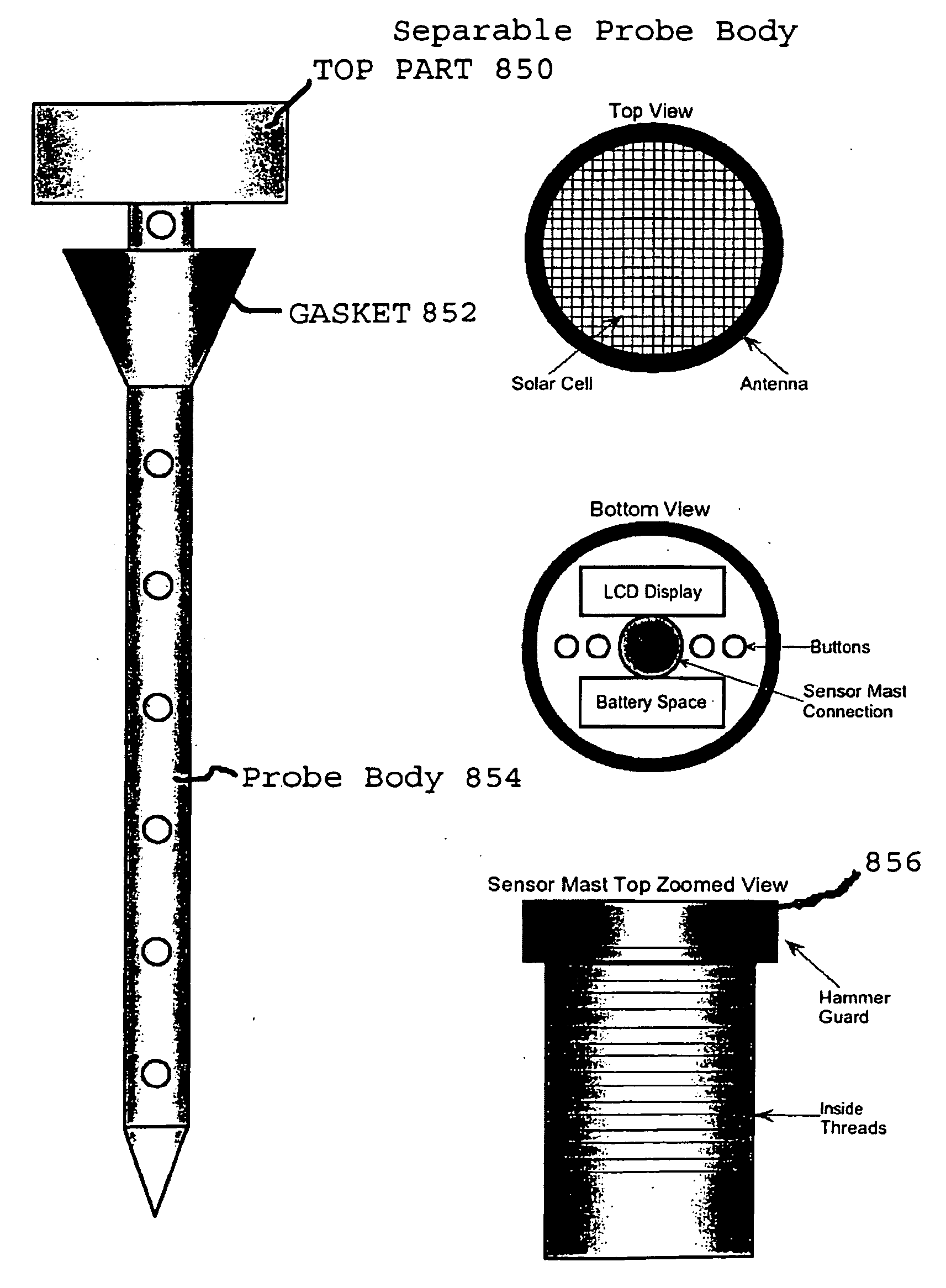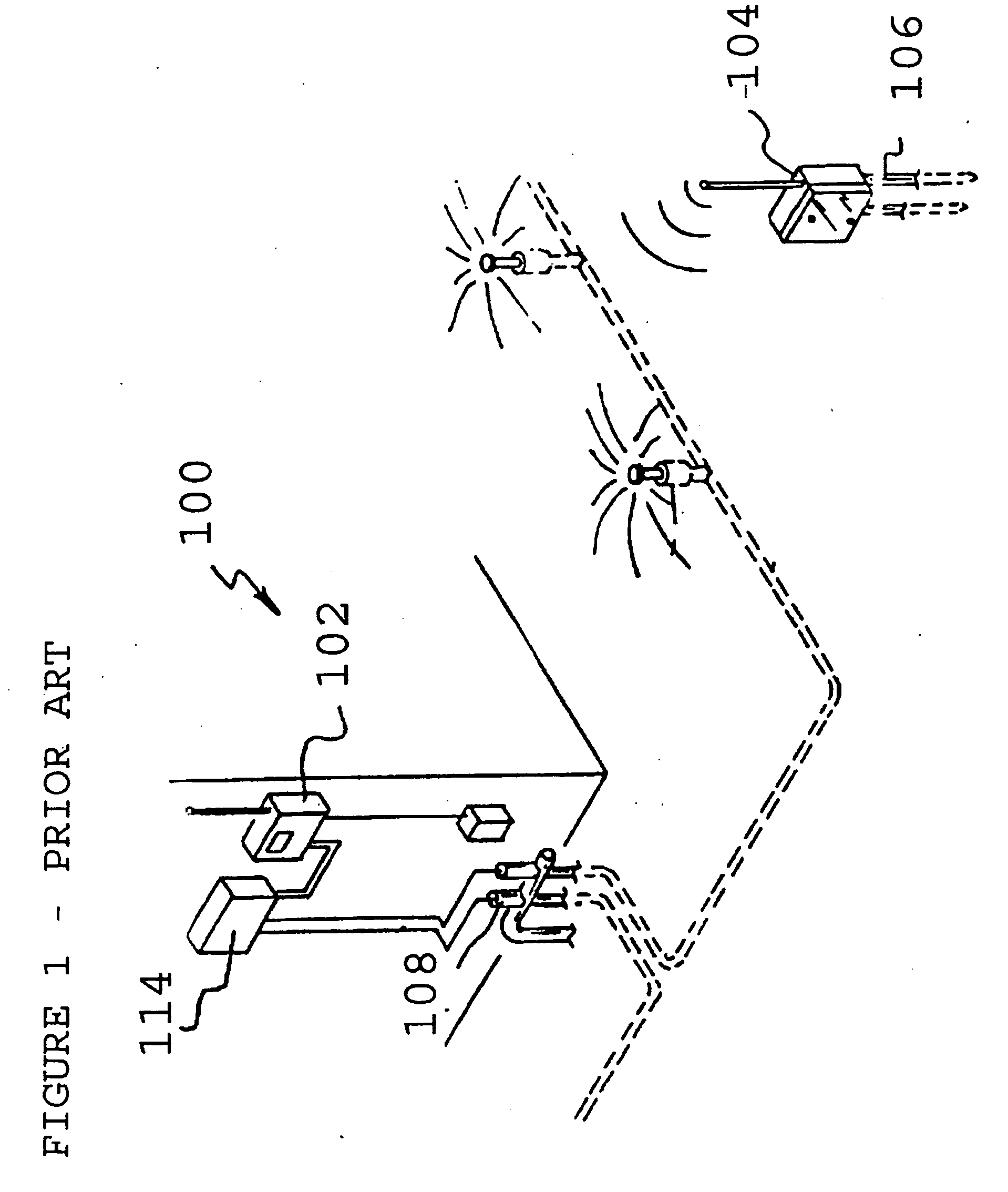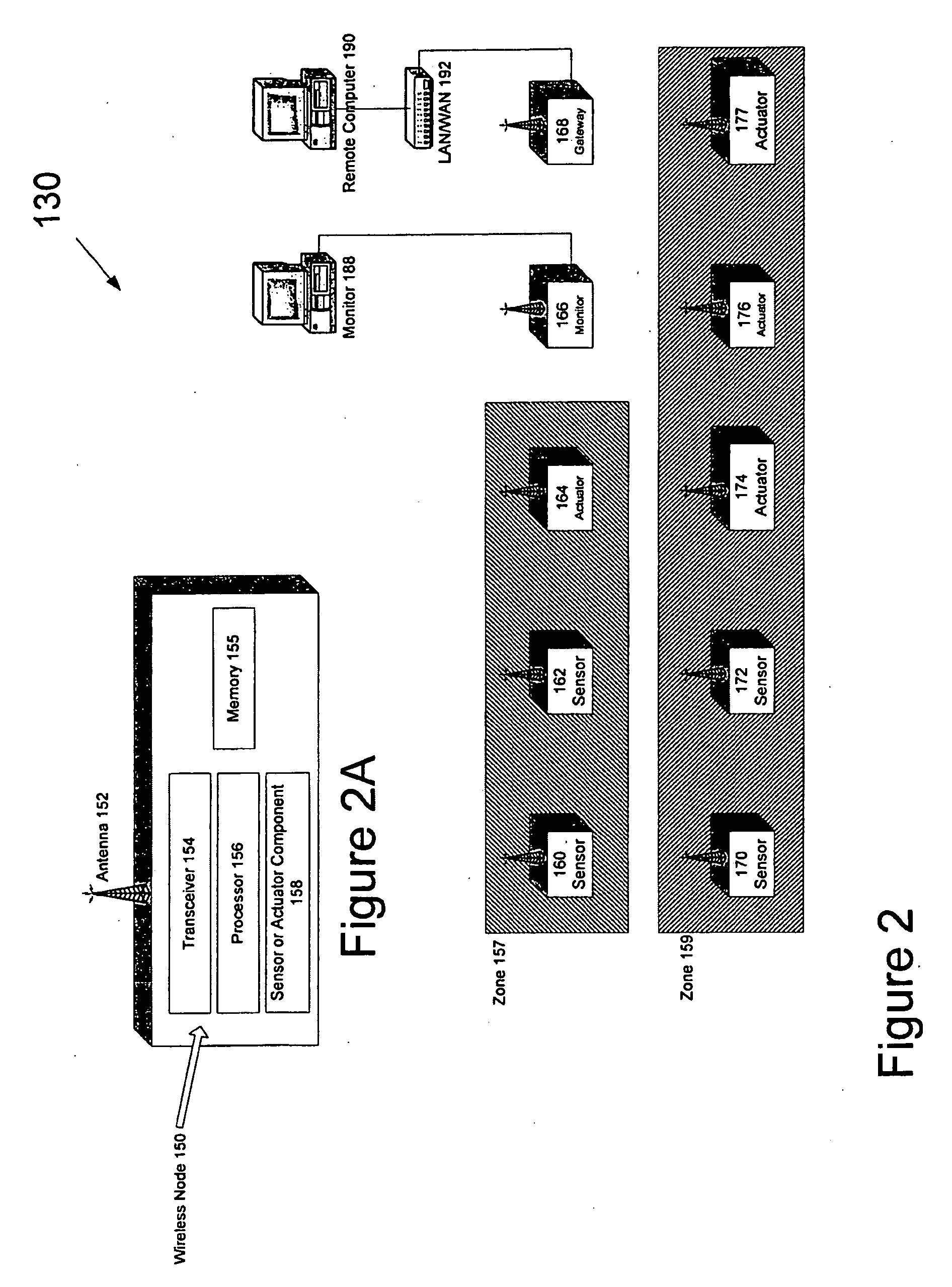Wireless Sensor Probe
a sensor and probe technology, applied in the field of wireless sensor systems, can solve the problems of ineffective means of conserving resources, over-watering and under-watering landscaping, and long installation time, and achieve the difficult methods required for a proper installation
- Summary
- Abstract
- Description
- Claims
- Application Information
AI Technical Summary
Problems solved by technology
Method used
Image
Examples
Embodiment Construction
[0042]In accordance with the principles of the present invention, a wireless environmental monitoring and control system utilizes an array of wireless sensors for providing extended range and multiple control points within the array. The wireless environmental monitoring and control system can support sensing and irrigation control over a large area without the need for a central controller. By providing distributed monitoring and control, the control system of the present invention can be used to realize more efficient water utilization and improved crop yield.
A. Multi-hop Wireless Sensor Irrigation Control System
[0043]FIG. 2 is a schematic diagram of a wireless environmental monitoring and control system according to one embodiment of the present invention. In general, wireless environmental monitoring and control system 130 (system 130) is configured to include one or more irrigation zones where each irrigation zone can include one or more sensor nodes and one or more actuator no...
PUM
| Property | Measurement | Unit |
|---|---|---|
| area | aaaaa | aaaaa |
| depths | aaaaa | aaaaa |
| soil depth | aaaaa | aaaaa |
Abstract
Description
Claims
Application Information
 Login to View More
Login to View More - R&D
- Intellectual Property
- Life Sciences
- Materials
- Tech Scout
- Unparalleled Data Quality
- Higher Quality Content
- 60% Fewer Hallucinations
Browse by: Latest US Patents, China's latest patents, Technical Efficacy Thesaurus, Application Domain, Technology Topic, Popular Technical Reports.
© 2025 PatSnap. All rights reserved.Legal|Privacy policy|Modern Slavery Act Transparency Statement|Sitemap|About US| Contact US: help@patsnap.com



